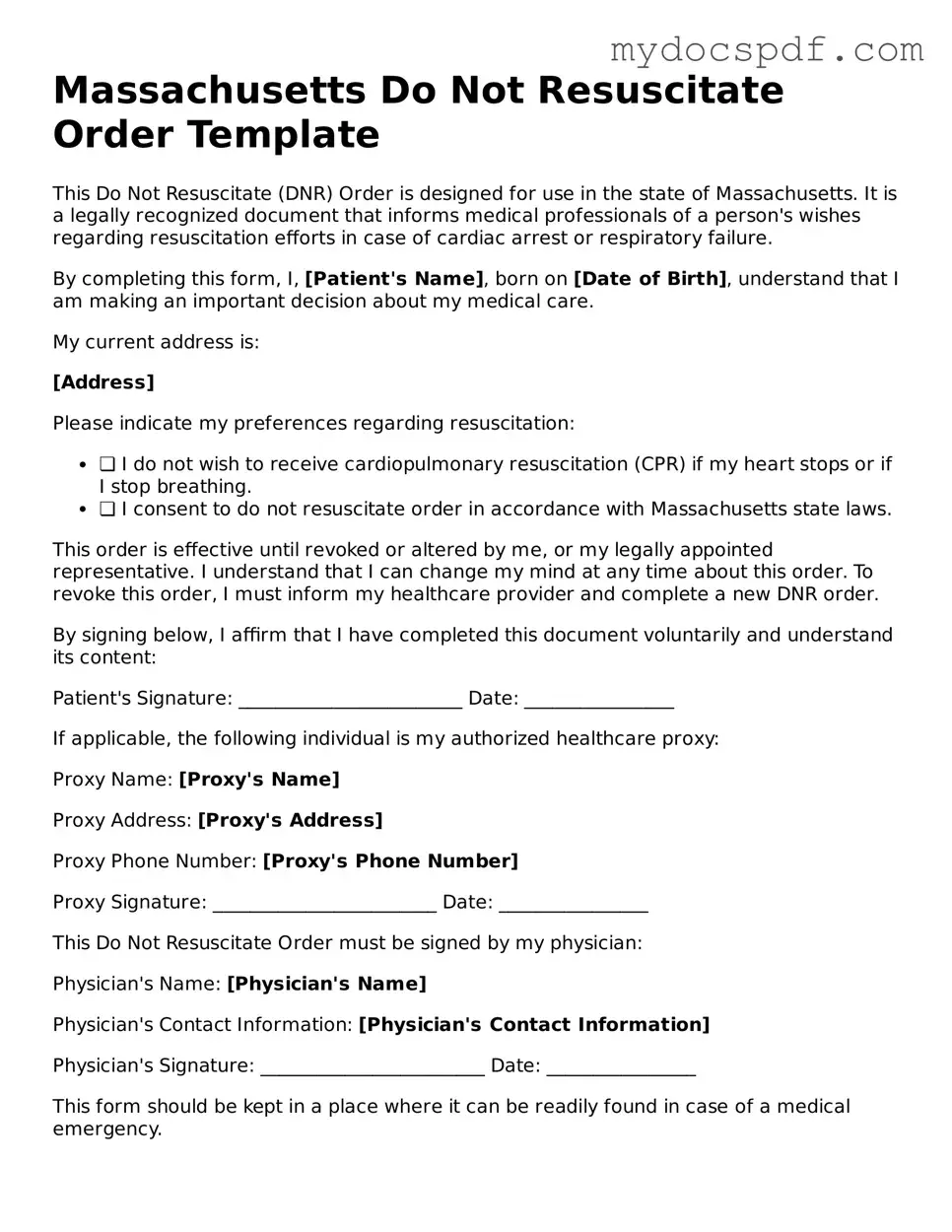Massachusetts Do Not Resuscitate Order Template
This Do Not Resuscitate (DNR) Order is designed for use in the state of Massachusetts. It is a legally recognized document that informs medical professionals of a person's wishes regarding resuscitation efforts in case of cardiac arrest or respiratory failure.
By completing this form, I, [Patient's Name], born on [Date of Birth], understand that I am making an important decision about my medical care.
My current address is:
[Address]
Please indicate my preferences regarding resuscitation:
- ❏ I do not wish to receive cardiopulmonary resuscitation (CPR) if my heart stops or if I stop breathing.
- ❏ I consent to do not resuscitate order in accordance with Massachusetts state laws.
This order is effective until revoked or altered by me, or my legally appointed representative. I understand that I can change my mind at any time about this order. To revoke this order, I must inform my healthcare provider and complete a new DNR order.
By signing below, I affirm that I have completed this document voluntarily and understand its content:
Patient's Signature: ________________________ Date: ________________
If applicable, the following individual is my authorized healthcare proxy:
Proxy Name: [Proxy's Name]
Proxy Address: [Proxy's Address]
Proxy Phone Number: [Proxy's Phone Number]
Proxy Signature: ________________________ Date: ________________
This Do Not Resuscitate Order must be signed by my physician:
Physician's Name: [Physician's Name]
Physician's Contact Information: [Physician's Contact Information]
Physician's Signature: ________________________ Date: ________________
This form should be kept in a place where it can be readily found in case of a medical emergency.
